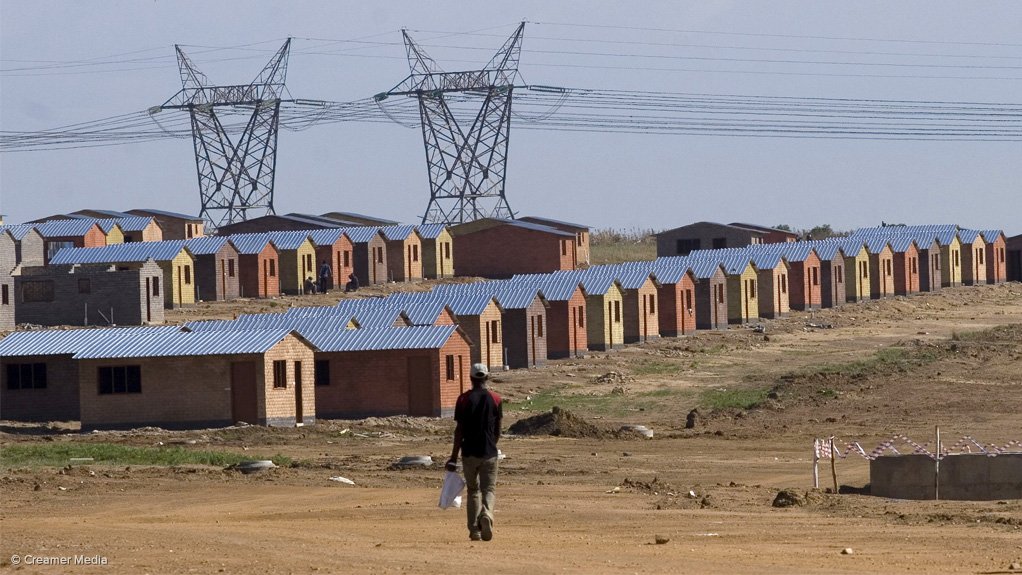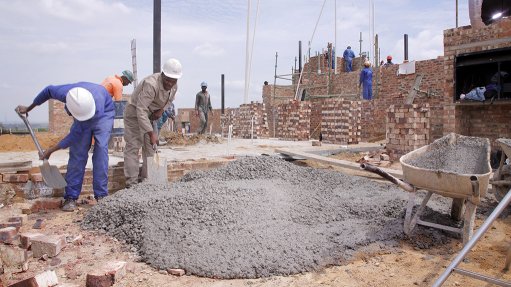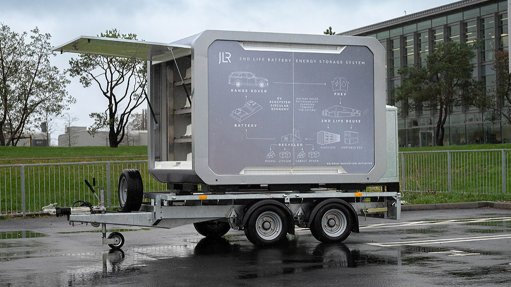Households in informal dwellings remain at 14%
The number of households living in informal dwellings remained stubbornly high with nearly 14% of South Africa’s 15-million households living in such lodgings.
The North West recorded the highest percentage at 22.1%, Statistics South Africa’s (Stats SA’s) latest General Household Survey (GHS) showed.
The percentage of South African households living in formal dwellings increased from 73.7% to 77.7%, while households living in informal dwellings increased 0.4 percentage points to 13.6% between 2002 and 2013.
Over the same period, the percentage of households in traditional dwellings declined by 2.5 percentage points.
North West recorded the highest number of informal quarters owing to the platinum belt and the extensive associated mining, Stats SA statistician general Pali Lehohla explained at a media briefing in Pretoria unpacking the latest results of the GHS, which was undertaken between January and December 2013.
He noted that many of the informal housing structures reported were in provinces that had significant mining or industrial hubs.
Gauteng had reported 19.8% of the populous province’s households staying in informal dwellings.
However, despite the two provinces having the highest concentration of informal residences, the majority of the households – 78.6% and 76.5% respectively – lived in formal housing.
The Western Cape and the Free State had 16% and 15.6% of the provinces’ households residing in informal housing.
Limpopo came out tops with the smallest percentage of households living in informal dwellings at 3.7%, with just over 92% of households living in formal units.
The GHS revealed that about 15% of the country’s households were living in Reconstruction and Development Programme (RDP), or State-subsidised, housing, with a further 13.6% reporting at least one household member on a waiting list for such housing.
However, a number of households had raised concerns about the quality of workmanship, with 15.9% reporting weak or very weak walls and 15.3% reported weak or leaking roofs.
The percentage of households receiving a government housing subsidy increased from 5.5% in 2002 to 13.3% in 2013.
Comments
Press Office
Announcements
What's On
Subscribe to improve your user experience...
Option 1 (equivalent of R125 a month):
Receive a weekly copy of Creamer Media's Engineering News & Mining Weekly magazine
(print copy for those in South Africa and e-magazine for those outside of South Africa)
Receive daily email newsletters
Access to full search results
Access archive of magazine back copies
Access to Projects in Progress
Access to ONE Research Report of your choice in PDF format
Option 2 (equivalent of R375 a month):
All benefits from Option 1
PLUS
Access to Creamer Media's Research Channel Africa for ALL Research Reports, in PDF format, on various industrial and mining sectors
including Electricity; Water; Energy Transition; Hydrogen; Roads, Rail and Ports; Coal; Gold; Platinum; Battery Metals; etc.
Already a subscriber?
Forgotten your password?
Receive weekly copy of Creamer Media's Engineering News & Mining Weekly magazine (print copy for those in South Africa and e-magazine for those outside of South Africa)
➕
Recieve daily email newsletters
➕
Access to full search results
➕
Access archive of magazine back copies
➕
Access to Projects in Progress
➕
Access to ONE Research Report of your choice in PDF format
RESEARCH CHANNEL AFRICA
R4500 (equivalent of R375 a month)
SUBSCRIBEAll benefits from Option 1
➕
Access to Creamer Media's Research Channel Africa for ALL Research Reports on various industrial and mining sectors, in PDF format, including on:
Electricity
➕
Water
➕
Energy Transition
➕
Hydrogen
➕
Roads, Rail and Ports
➕
Coal
➕
Gold
➕
Platinum
➕
Battery Metals
➕
etc.
Receive all benefits from Option 1 or Option 2 delivered to numerous people at your company
➕
Multiple User names and Passwords for simultaneous log-ins
➕
Intranet integration access to all in your organisation





















